A Quick 8 Step Backlink Audit Guide
If you want your SEO efforts to pay off, and we mean really pay off, double down on research and analysis.
Many businesses dive headfirst into SEO campaigns without building a strong foundation first.
If you don’t have a good understanding of where you currently stand, your SEO efforts will fall flat on their face.
Before you launch any strategy, run an audit to get a complete picture of your current profile.
The same goes for link building.
Before you rush to launch a campaign, run a comprehensive and complete backlink audit to get a good grasp of your backlink profile.
If you’re confused about how to do a backlink audit, stick around.
We’re breaking everything down in our backlink audit guide.
Let’s begin!
What is a Backlink Audit?
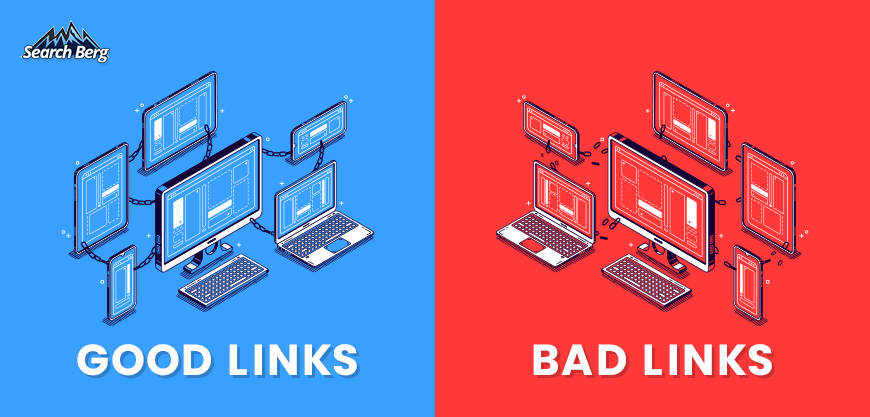
A backlink audit is the process of identifying and analyzing the quality of all the links currently pointing to your website.
As a small or mid-sized business, you’ll have a decent number of backlinks at any given time.
Perhaps dozens, hundreds, or even thousands.
An audit will help you get a complete list of all the links pointing to your site.
You’ll be able to segment your backlinks into:
- Toxic/harmful backlinks
- Spammy backlinks
- Unnatural backlinks
- Low-quality backlinks
- Regular backlinks
- High-quality backlinks with high domain authority (DA)
Why is this so important?
It’s simple.
A thorough backlink audit will help you take the right course of action, not just randomized action.
Your link building campaign will be more specific and targeted, not generalized.
You’ll know exactly which backlinks are harming your business. As a result, you can take action to remove them and avoid getting penalized by Google.
You’ll also know which backlinks are adding value to your business. You can use this information to build strong link-building partnerships.
A clean backlink profile will go a long way in helping you enjoy great rankings and stay in Google’s good books.
As you rank higher on Google SERPs, the traffic and conversions will come flooding in.
Knock knock, who’s there?
Consistent, sustainable, long-term business growth.
Let’s understand how we turn this goal into reality!
How to Do a Backlink Audit
Step 1: Find the Right Tool
Before you kick things off, find an advanced tool that helps you run a comprehensive audit.
Google Webmaster Tools will give you a complete list of your backlinks.
However, you’ll have to review them manually.
This can be very taxing, especially if you have a lot of backlinks.
Opt for an advanced tool that automates the process.
You’ll end up saving a lot of time, energy, resources, and money.
At Search Berg, we use a cutting-edge backlink audit tool to get a complete picture of your backlinks.
Our backlink search and analysis processes are automated.
However, we believe that advanced backlink evaluation requires human attention, intelligence, and expertise.
We automate the process as much as possible, and turn to manual evaluation halfway through.
Our experts manually check each backlink’s value, relevancy, and overall potential.
We remove toxic links, identify link penalties, analyze anchor text, develop link building partnerships, and check a lot of other boxes off the list.
By combining the power of automation with human judgment, we achieve the most powerful results possible.
Step 2: Do Pre-Audit Competitor Research
You cannot run a backlink audit without benchmarking your performance against your top competitors.
Every industry has very unique SEO practices in place.
The more niche your industry, the more nuanced the SEO approach.
Before you run an audit, get a good grasp of where your competitors stand.
This will help you analyze your backlinks through a comparative lens.
Let’s say you run a small tech support business.
As you run a backlink audit, you identify 12 high-DA backlinks.
Pretty impressive, right?
You may think you’re on the right track and ease up on your link-building efforts for a bit.
Pre-audit competitor research will help you be as realistic as possible.
If your top two competitors have earned 20 and 35 high-DA backlinks, respectively, you’ll be able to develop a contextual link-building campaign.
This helps reduce the risk of complacency.
As you get a reality check, you’ll understand where you stand and what needs to be done.
At Search Berg, we do competitor research for our clients.
Our experts will produce a complete overview of your top competitors’:
- Backlinks
- Referring domains
- Referring IPs
- Referring subnets
- DA (domain authority) score
- PA (page authority) score
- Types of backlinks
- Backlink history
- Ongoing backlink partnerships
Use this information to understand your own site’s link profile and head in the right direction accordingly.
Competitor research will help you do the most reasonable evaluation possible.
Step 3: Identify Your Backlinks
The real work begins.
Now that you have all the pre-audit insight you need, it’s all systems go!
Identify all the external links that are sending traffic to your site.
If you’re just starting off, you can use Google’s free Search Console tool for this.
However, we strongly recommend working your way up toward a robust paid app.
Search Console is designed to help you work on your site and improve it for your audience.
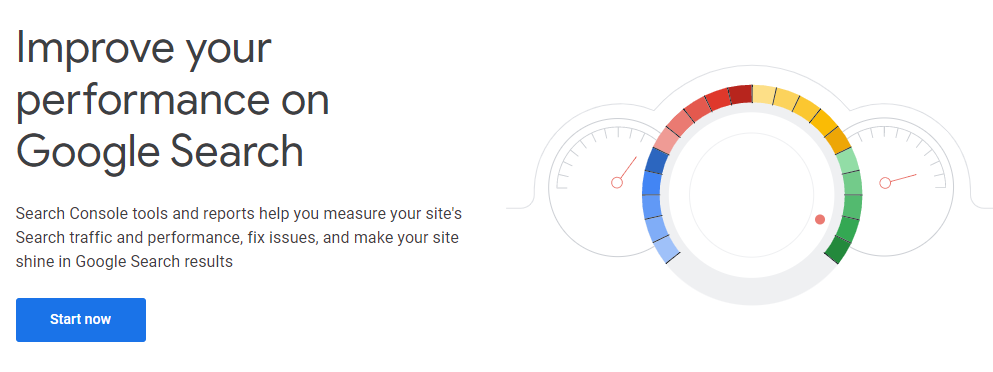
Start by logging into your dashboard.
Once you’re done, click on “Search Traffic” and “Links to Your Site”.
Google will give you a number of all the external links that are currently pointing to your site.
Make sure you explore valuable categories like “Who Links the Most”.
Work with an expert to ensure that you’re correctly analyzing all the data provided to you.
While Search Console isn’t the most comprehensive tool, it does fetch accurate and up-to-date information.
For a more nuanced analysis, switch to a paid app.
However, Search Console is a pretty good starting point for beginners.
Recommended Read: Backlink Quality vs. Quantity: What’s More Important?
Step 4: Evaluate Your Backlinks
Backlink search is important, but backlink evaluation is the meat of the matter.
Excellent evaluation will help you restore a healthy backlink profile and achieve link-building success.
You have three options here:
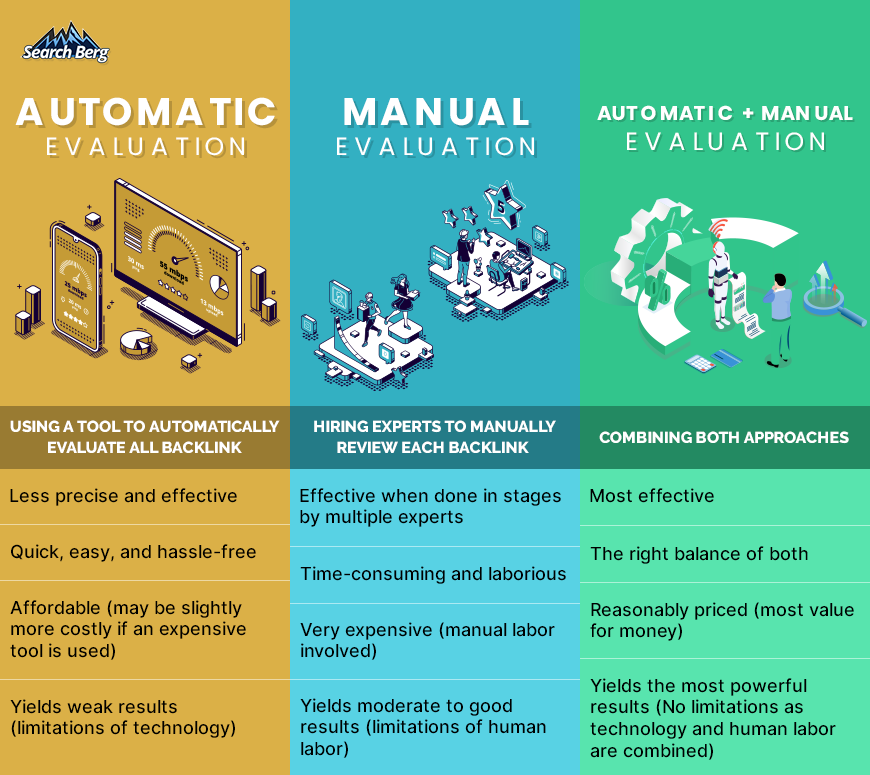
Your best bet is to use a combinative approach.
Start with automatic evaluation.
Follow this up with a complete analysis of each individual link.
At this stage, you should ask the following questions:
- How many unhealthy/dead backlinks do I have?
- What is my link velocity, i.e., how frequently is my site gaining backlinks?
- What is my link churn, i.e., how frequently is my site losing backlinks?
- How many low-quality backlinks do I have? Should I disavow them?
- What is my nofollow to dofollow link ratio?
- What is my referring pages to referring domains ratio?
- Which high-DA sites are linking to my competitors but not me?
- Which platforms have I earned the most backlinks from?
- Are any anchor texts spammy?
- What is my CTLDs distribution, i.e., which countries do I get most of my backlinks from?
- Has my site been hit by a negative SEO attack?
For expert evaluation, consult a team of professionals. They’ll break your backlink profile down systematically and create a powerful action plan accordingly.
Step 5: Disavow Toxic Backlinks
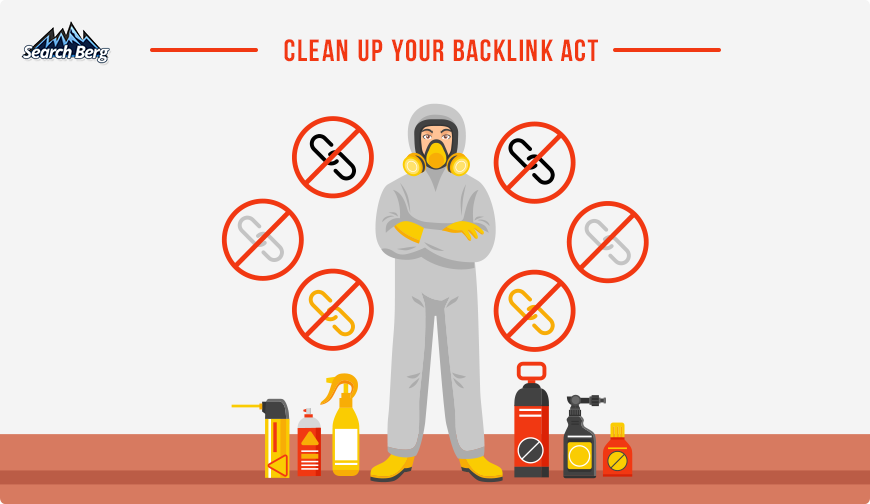
Once you’ve evaluated your backlinks, it’s time to take action.
Depending on the results, you’ll be required to take specific measures.
Start by disavowing toxic backlinks.
This is a little tricky to do.
It’s important to note that you don’t have to manually disavow every toxic backlink.
Google has made it very clear that backlinks should only be disavowed if a) you have way too many spammy, low-quality, or artificial links pointing to your site and b) the links have or will cause a manual action on your site.
If this is not the case, leave things be.
Google is pretty smart.
It actively crawls and indexes web pages, so you can rest assured that action will be taken without your intervention.
If your backlink profile satisfies the two conditions discussed above, reach out to the website owner and request link removal.
This isn’t always easy.
In many cases, the website owner cannot be reached, or the link cannot be found.
Under these circumstances, removal isn’t an option anymore; you’ll have to disavow the links.
Send the toxic backlink to the disavow list and export it to Google Disavow.
This advanced feature must be used with care.
Follow Google’s guidelines to successfully complete the process.
You need time, patience, and expertise for this.
The guidelines are hyper-specific and can easily make newbies feel frustrated.
Work with professionals who have done this ample times before.
Google has explicitly stated that misuse of this feature can potentially harm your site’s performance on Google SERPs.
When used correctly, this tool will help you clean up your backlink profile and enjoy better link building performance.
Step 6: Check for Penalties
The word “penalization” should make every business shudder.
The last thing you want is to get on Google’s bad side.
If you get penalized, your own rankings will suffer.
Google does not take kindly to defaulters, no matter what the surrounding circumstances may be.
Be careful, and be on your best behavior.
Check for the two most common link penalties:
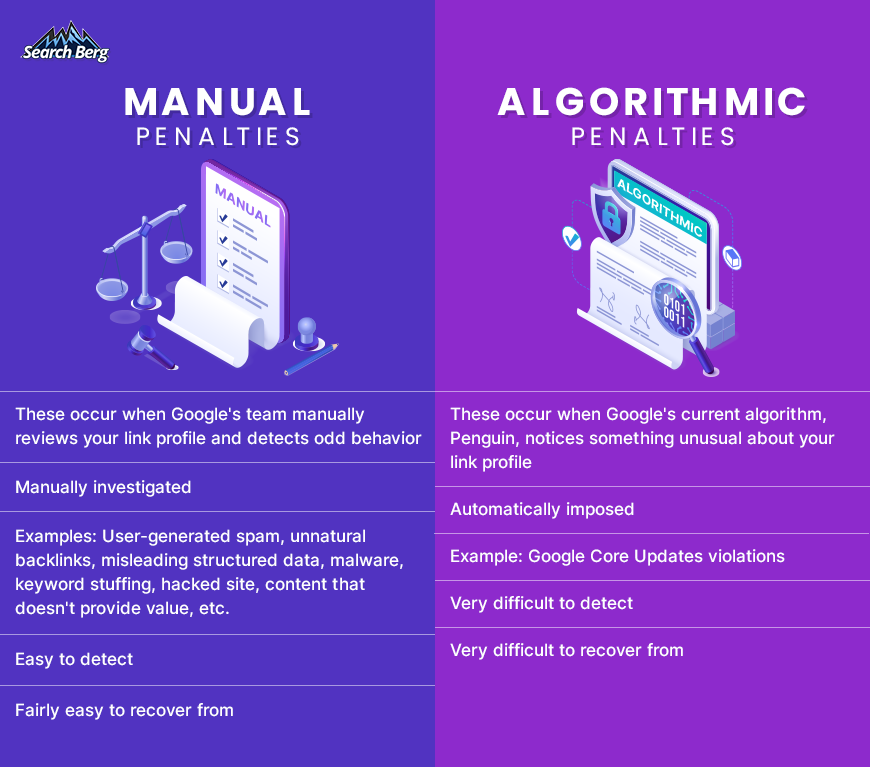
Both penalties affect rankings and traffic.
Fortunately, recovery is possible.
Start by checking for manual penalties.
If you have any, you’ll receive a message from Google Webmasters.
Automatic penalties are a little more difficult to detect since there’s no official notification from Google.
However, there will be one clear sign: a significant drop in organic traffic.
Following an algorithmic penalty, your traffic will look something like this:

Of course, the drop can also be natural.
However, a drop this significant doesn’t just happen naturally.
If it does, you’ll know that you’ve done something wrong.
Perhaps one of your products malfunctioned and resulted in a scandal that led to mass boycotting.
Or maybe your site was temporarily down.
If you don’t recall something happening, the drop is most likely because of an algorithmic penalty.
There’s no way to know for sure, so guesswork will have to enter the picture.
Start by checking for bad links.
If you recently paid for backlinks, the culprit is looking you in the eye.
Google has stated time and time again that paid backlinks are a big no.
If you’re guilty of exchanging some cash for link juice, you’re definitely dealing with an algorithmic penalty.
You don’t have a choice; get the links removed.
You can also modify them by adding a rel=” nofollow” attribute, so they don’t pass PageRank.
Once you’ve removed non-compliant links, submit a reconsideration request ASAP.
You won’t be able to get every paid backlink removed, as discussed earlier in this blog.
If that’s the case, simply disavow the links.
Keeping track of both manual and algorithmic penalties isn’t just important; it’s imperative.
Many businesses don’t perform backlink audits.
As a result, they never find out about algorithmic penalties.
You’ll potentially lose a ton of traffic and blame it on an incompetent SEO team.
Stop scapegoating and start finding the root cause of these critical SEO issues.
A thorough backlink audit should be your starting point.
Step 7: Find New Link Building Opportunities

Backlink audits are excellent because they help you discover new link building opportunities.
The more high-DA backlinks you collect, the better your SERP rankings!
Use the results from your audit wisely.
If your competitors have generated high-DA backlinks from some of the biggest names in your industry, these platforms are clearly open to referencing SMB content in their work.
Draft some kickass emails and start building link building partnerships!
Your audit will also reveal some interesting insights.
Perhaps certain high-DA platforms have stopped linking to you.
This is a great opportunity to reach out to them, ask what went wrong, and briefly explain how your content will add value to their work.
Avoid spamming these platforms.
A well-crafted, professional, succinct email will do the trick!
Step 8: Improve Your Link Structure
Once you’ve gotten rid of toxic backlinks, handled penalizations, and made efforts to develop link building partners, it’s time to pay close attention to your link structure.
Your backlink audit is pretty much useless if you don’t rework your link profile.
Don’t skimp on this!
Start by improving your domain authority (DA) and page authority (PA).
The simplest way to do this is by earning more high-quality backlinks.
And that will only happen when your content quality is *chef’s kiss*.
Stop thinking about link building for a second and switch gears entirely.
SEO success is contingent on consistent quality.
No, we don’t mean churning out a great blog here and there.
We mean producing consistently spectacular content that satiates the Google algorithm and gives your audience exactly what they’re looking for.
Your goal is to rank high on Google SERPs, so much so that high-DA brands notice your existence.
Once your rankings improve organically, you’ll start developing new backlink partnerships.
It’s a quality game.
Play it wisely, and link juice will automatically start pouring into your link-building glasses.
In addition to prioritizing quality, start improving your internal linking strategy.
Users should be able to navigate your website as smoothly as possible.
When they’re reading a blog, they should be taken to other relevant internal pages contextually.
Link to previous work to improve user experience.
Avoid stuffing links.
When done in moderation, internal linking will improve your link structure without getting you penalized.
We also recommend incorporating high-ranking keywords in the anchor text.
Turn mentions into links, start guest blogging (no paid backlinks, please), publish skyscraper content, become a reputable source for reporters and bloggers, and release diverse types of content.
When combined, these strategies will help you enjoy a powerful link structure, spectacular rankings, high traffic, and ample backlinks.
Keep in Mind: Link-building strategies vary from business to business.
Work with link building experts to run a successful backlink audit and create an individualized action plan for your business.
Your link-building campaign should be as specific as possible!
Run away from one-size-fits-all plans.
Instead, work on a custom strategy that takes your business from Point A to Point B, Point B to Point C, and so on.
The more systematic, strategic, and targeted your approach, the better.
An expert team will help you get there!
Recommended Read: 10 Advanced Link Building Tips and Tricks to Boost Your SEO
Your Backlinks Are Buzzing!
Ready to start building high-DA backlinks? Potential backlinks are buzzing with excitement!
In this blog, we helped you understand how to do a backlink audit. Now it’s time to put this backlink audit guide into action.
Our experts are here to help! We’ll perform a comprehensive backlink audit for your business.
Our team checks off all the boxes.
From removing toxic and spammy backlinks to identifying new link building opportunities to performing competitor research, we handle it all.
Let’s get you out of the notorious link building rut and back on track!














